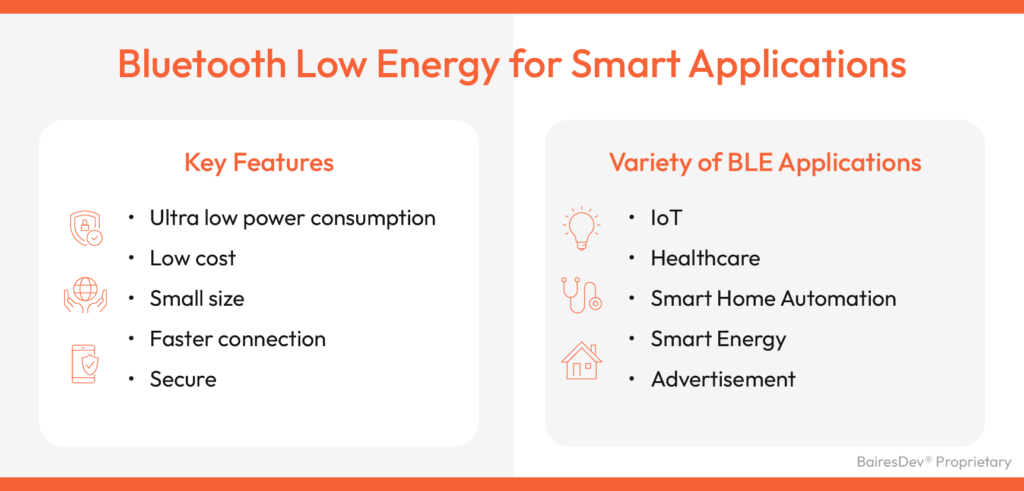Zephyr OS's open source community, documentation, and tutorials assist developers in creating secure IoT solutions that thrive in the evolving technology landscape.

In our quest to create secure, connected, and future-proof devices, we discovered a hidden gem in the world of operating systems: Zephyr OS . Now, you might be thinking, “Great, another operating system to learn,” but we promise it's worth it.
Zephyr OS is an open source real-time operating system (RTOS) that was designed with one goal in mind: supporting the smallest footprint IoT devices.
It is compact, scalable and adaptable. The best part? It was built to be future-proof. This ensures that any investment in learning or integrating this operating system will continue to pay dividends, even as the technology evolves.
Now consider a scenario where you are developing an IoT device intended for long-term deployment in a remote location. Traditional operating systems can require regular updates or patches – which is quite inconvenient when your device is on top of a wind turbine or inside an industrial plant.
With Zephyr OS's modular design and its ability to run on devices with as little as 8KB of memory, you can essentially “set it and forget it” on these devices without compromising their performance or security. Take a quick look at an introduction to Zephyr for a quick overview of its features.
Security on IoT devices
In the domain of IoT devices, security is an absolute necessity. Imagine a network of smart thermostats installed across a city, controlling the heating and cooling systems of countless buildings. If these devices do not have robust security measures, they could become prime targets for cybercriminals. A successful attack can result in anything from minor discomfort to major disruptions.
This is where Zephyr OS shines. It provides developers with a variety of security features designed specifically for IoT devices. These include secure boot (to ensure that only authenticated code runs on the device), hardware encryption support (for data protection), and network-level security protocols such as DTLS and TLS (to safeguard data transmission).
In essence, Zephyr OS equips us with the tools we need to build secure IoT devices that can resist attacks and protect sensitive data – because in today's interconnected world, a breach in one device can potentially compromise an entire network.
Understanding Zephyr OS Connectivity Features
Zephyr OS supports a wide variety of networking protocols, including Bluetooth Low Energy (BLE), Wi-Fi, Ethernet, and even 6LoWPAN (a protocol that allows low-power devices to connect directly to the Internet). This means we can design IoT devices that can communicate seamlessly with other devices and networks.
But let's delve into a specific example: BLE or Bluetooth Low Energy . This technology is ideal for IoT applications as it consumes less power while maintaining robust communication.
Imagine a network of smart sensors in a large warehouse monitoring temperature and humidity levels. With BLE support in Zephyr OS, these sensors can send real-time data to a central system without draining batteries faster than you can say “low-power wireless communication.”
Therefore, Zephyr OS not only helps us harden our IoT devices against cyber threats but also offers versatile connectivity options. This makes it easier to create IoT solutions that are secure and adaptable to various network environments.
Building Devices with Zephyr: A Step-by-Step Guide
Step 1: Set up your development environment
First, we need to establish a solid foundation. This means setting up a development environment that supports Zephyr OS. You will need a Linux, macOS or Windows system. Install the Zephyr Software Development Kit (SDK) which includes all necessary tools and libraries.
Step 2: Get your hands on the source code
Next, we will clone Project Zephyr from its GitHub repository. Now you have the source code in your hands – treat it well!
Step 3: Configure your device
This is where things get exciting! Let's configure our device using Device Tree and Kconfig files (think of them as your device model). These files allow us to specify hardware details and select specific software features for our IoT device.
Step 4: Build and Upgrade
Now comes the fun part: creating and updating your app on your device. This involves compiling your application with all its dependencies into a binary file that can be flashed into your device's memory.
Remember, Rome wasn't built in a day – so don't worry if you encounter any obstacles along the way. With persistence, we can create secure, connected, future-proof devices using Zephyr OS, ready to take on whatever the world of IoT throws at them. Be sure to consult the Zephyr project documentation as it may change over time!
Advantages of Zephyr over other IoT operating systems
Now that we've navigated the exciting path of building a Zephyr OS device, let's switch gears and discuss why we believe Zephyr has an advantage over other IoT operating systems.
Firstly, Zephyr is an open source project under the Linux Foundation . This means it benefits from a global community of developers who continually contribute to its improvement (a bit like having an army of technological assistants at your disposal).
Secondly, Zephyr OS supports multiple hardware architectures, making it incredibly versatile. Whether you're working with 32-bit ARM Cortex-M, x86, or RISC-V, the Zephyr has you covered.
Thirdly, its small memory footprint makes it ideal for devices with limited resources. It's like putting an elephant in a Mini Cooper – it seems impossible until you see Zephyr do it!
But perhaps the most significant advantage lies in the emphasis placed on security. In this increasingly connected world, where cyber threats are as common as cat videos on the Internet, security is paramount. And that's where Zephyr shines.
Zephyr OS: A deep dive into its security features
It's important to note that the Zephyr operates on a microcore design . This means it separates the kernel (the central part of the operating system) from other system functionality, such as device drivers or file systems. This means you can make changes or updates to one part without affecting the entire system.
Now about our favorite feature: secure boot . We mentioned this before as being similar to a digital security for your device. Secure boot uses cryptographic methods to verify each software or firmware before it runs.
If something looks suspicious (like rogue code), Secure Boot will close the door. Additionally, Zephyr employs a permission-based security model, which means that each process or task requires specific permissions to perform certain operations. Think of it as a high-security safe where each room requires a unique key.
To wrap up our deep dive, let's not forget Zephyr's proactive approach to vulnerability management. They regularly publish warnings about any potential vulnerabilities (bugs that can be exploited by attackers) and quickly implement patches to fix them.
You should also consider that the Zephyr development process focuses primarily on security functionality. You will find the steps of the security process that this development considers.

Zephyr Security Overview
Getting Started with Zephyr: Resources and Tools for Developers
The Zephyr Project offers a comprehensive set of resources for developers, including detailed documentation , tutorials , and a supportive community forum. The documentation guides you step by step on how to build your IoT device using Zephyr OS.
For those who learn by doing, there are tutorials that cover everything from starting your first project to advanced topics like sensor integration and managing power consumption. Then there's the community forum – a bustling marketplace of ideas where developers exchange ideas, solve problems, and share their successes.
These features provide a solid foundation for working with Zephyr OS. They ensure we're not just rummaging around in the dark, but also equipped with flashlights as we venture into this brave new world of connected devices.
Remember: creating future-proof devices isn't just about adopting the right operating system; it's also about taking advantage of available resources and continually improving our skills.
Final considerations: The future of IoT with Zephyr OS.
In this rapidly advancing digital age, we are on the cusp of a new era – an era where devices are not only connected, but also secure and future-proof. Project Zephyr helps ensure our devices remain relevant and robust amid technological advances.
In essence, the future of IoT with Zephyr OS has infinite potential – a future where our devices will not only survive, but also thrive in the ever-evolving technology landscape. As we conclude, remember that staying current isn't just about keeping up; it's about leading the race.





















































